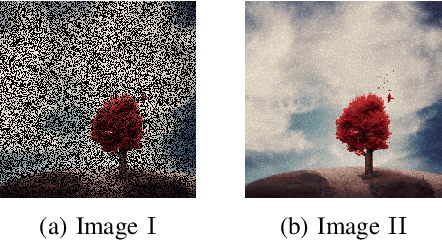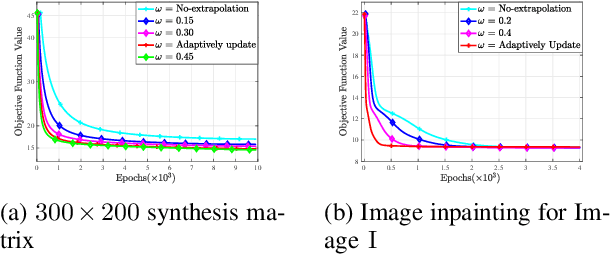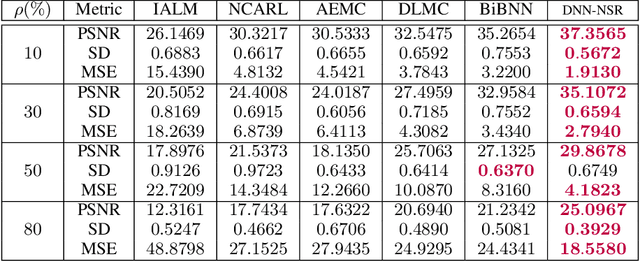Sajad Faramarzi
Energy Efficient Design of Active STAR-RIS-Aided SWIPT Systems
Mar 23, 2024Abstract:In this paper, we consider the downlink transmission of a multi-antenna base station (BS) supported by an active simultaneously transmitting and reconfigurable intelligent surface (STAR-RIS) to serve single-antenna users via simultaneous wireless information and power transfer (SWIPT). In this context, we formulate an energy efficiency maximisation problem that jointly optimises the gain, element selection and phase shift matrices of the active STAR-RIS, the transmit beamforming of the BS and the power splitting ratio of the users. With respect to the highly coupled and non-convex form of this problem, an alternating optimisation solution approach is proposed, using tools from convex optimisation and reinforcement learning. Specifically, semi-definite relaxation (SDR), difference of concave functions (DC), and fractional programming techniques are employed to transform the non-convex optimisation problem into a convex form for optimising the BS beamforming vector and the power splitting ratio of the SWIPT. Then, by integrating meta-learning with the modified deep deterministic policy gradient (DDPG) and soft actor-critical (SAC) methods, a combinatorial reinforcement learning network is developed to optimise the element selection, gain and phase shift matrices of the active STAR-RIS. Our simulations show the effectiveness of the proposed resource allocation scheme. Furthermore, our proposed active STAR-RIS-based SWIPT system outperforms its passive counterpart by 57% on average.
Matrix Completion via Nonsmooth Regularization of Fully Connected Neural Networks
Mar 15, 2024



Abstract:Conventional matrix completion methods approximate the missing values by assuming the matrix to be low-rank, which leads to a linear approximation of missing values. It has been shown that enhanced performance could be attained by using nonlinear estimators such as deep neural networks. Deep fully connected neural networks (FCNNs), one of the most suitable architectures for matrix completion, suffer from over-fitting due to their high capacity, which leads to low generalizability. In this paper, we control over-fitting by regularizing the FCNN model in terms of the $\ell_{1}$ norm of intermediate representations and nuclear norm of weight matrices. As such, the resulting regularized objective function becomes nonsmooth and nonconvex, i.e., existing gradient-based methods cannot be applied to our model. We propose a variant of the proximal gradient method and investigate its convergence to a critical point. In the initial epochs of FCNN training, the regularization terms are ignored, and through epochs, the effect of that increases. The gradual addition of nonsmooth regularization terms is the main reason for the better performance of the deep neural network with nonsmooth regularization terms (DNN-NSR) algorithm. Our simulations indicate the superiority of the proposed algorithm in comparison with existing linear and nonlinear algorithms.
Meta Reinforcement Learning for Resource Allocation in Aerial Active-RIS-assisted Networks with Rate-Splitting Multiple Access
Mar 13, 2024Abstract:Mounting a reconfigurable intelligent surface (RIS) on an unmanned aerial vehicle (UAV) holds promise for improving traditional terrestrial network performance. Unlike conventional methods deploying passive RIS on UAVs, this study delves into the efficacy of an aerial active RIS (AARIS). Specifically, the downlink transmission of an AARIS network is investigated, where the base station (BS) leverages rate-splitting multiple access (RSMA) for effective interference management and benefits from the support of an AARIS for jointly amplifying and reflecting the BS's transmit signals. Considering both the non-trivial energy consumption of the active RIS and the limited energy storage of the UAV, we propose an innovative element selection strategy for optimizing the on/off status of RIS elements, which adaptively and remarkably manages the system's power consumption. To this end, a resource management problem is formulated, aiming to maximize the system energy efficiency (EE) by jointly optimizing the transmit beamforming at the BS, the element activation, the phase shift and the amplification factor at the RIS, the RSMA common data rate at users, as well as the UAV's trajectory. Due to the dynamicity nature of UAV and user mobility, a deep reinforcement learning (DRL) algorithm is designed for resource allocation, utilizing meta-learning to adaptively handle fast time-varying system dynamics. Simulations indicate that incorporating an active RIS at the UAV leads to substantial EE gain, compared to passive RIS-aided UAV. We observe the superiority of the RSMA-based AARIS system in terms of EE, compared to existing approaches adopting non-orthogonal multiple access (NOMA).
SLIPT in Joint Dimming Multi-LED OWC Systems with Rate Splitting Multiple Access
Feb 28, 2024Abstract:Optical wireless communication (OWC) systems with multiple light-emitting diodes (LEDs) have recently been explored to support energy-limited devices via simultaneous lightwave information and power transfer (SLIPT). The energy consumption, however, becomes considerable by increasing the number of incorporated LEDs. This paper proposes a joint dimming (JD) scheme that lowers the consumed power of a SLIPT-enabled OWC system by controlling the number of active LEDs. We further enhance the data rate of this system by utilizing rate splitting multiple access (RSMA). More specifically, we formulate a data rate maximization problem to optimize the beamforming design, LED selection and RSMA rate adaptation that guarantees the power budget of the OWC transmitter, as well as the quality-of-service (QoS) and an energy harvesting level for users. We propose a dynamic resource allocation solution based on proximal policy optimization (PPO) reinforcement learning. In simulations, the optimal dimming level is determined to initiate a trade-off between the data rate and power consumption. It is also verified that RSMA significantly improves the data rate.
 Add to Chrome
Add to Chrome Add to Firefox
Add to Firefox Add to Edge
Add to Edge